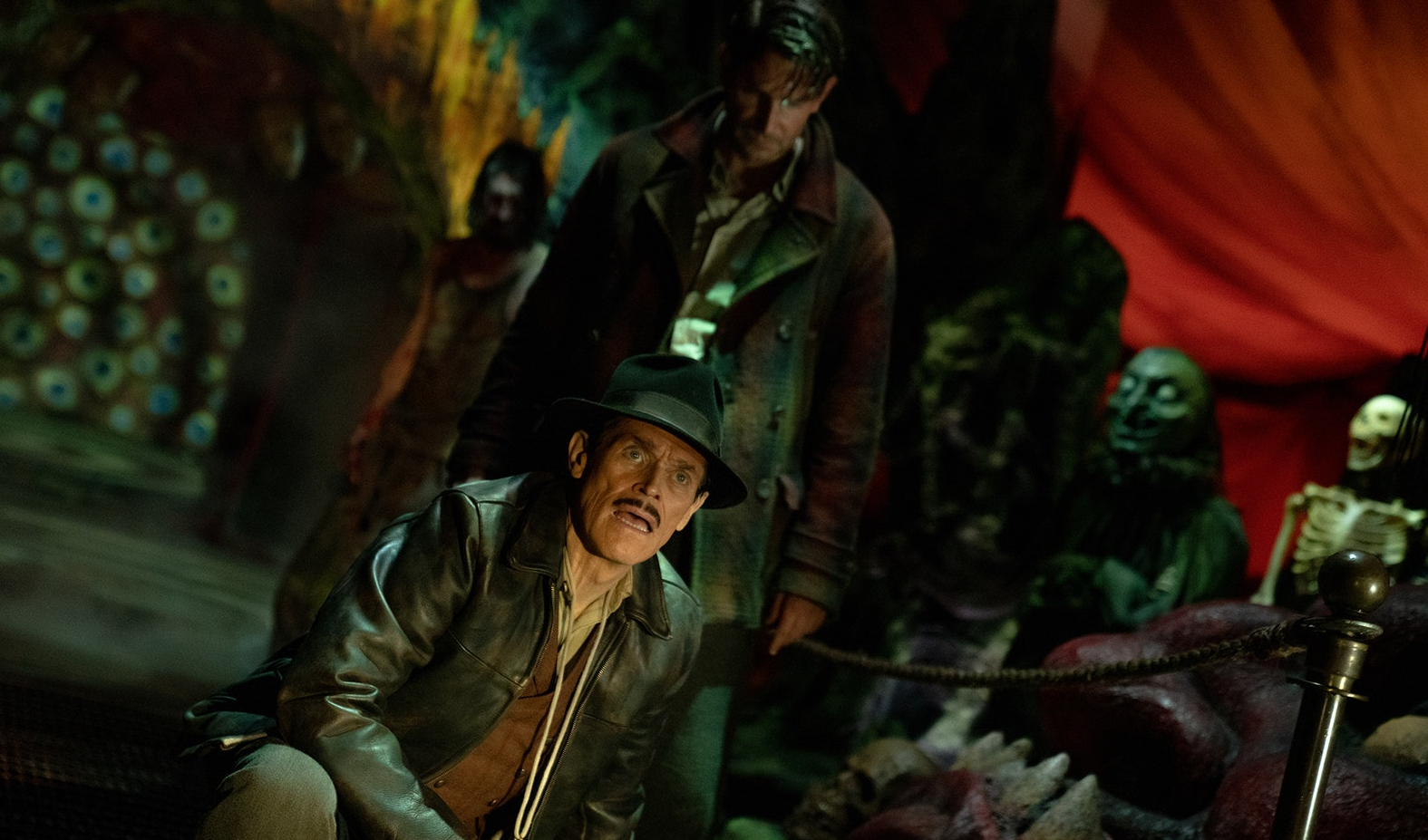Guillermo del Toro’s Nightmare Alley is a dreadful film in the best way possible. Set in the late 30s to early 40s, del Toro ditched his literal use of monsters for something much more devious; the devilish nature of humanity. In a time during which many of us were in solitude for over a year and a half, one of the few constants we had was the ability to self-reflect. Our identities had a spotlight shone on them, and when that happens, we may not always like what we find.
This journey of self-discovery is taken quite literally in the form of Bradley Cooper’s Stanton Carlisle, which is one of my favorite character names in a very, VERY long time. A conman who finds himself joining a traveling carnival, Carlisle is looking for a quick buck, however he can get it. It’s clear he has some morals through Cooper’s incredibly subtle performance full of idiosyncratic mannerisms. Although, however often we see the lines drawn in the sand, when and where Carlisle steps over them is far more riveting. Luckily, both del Toro and Cooper are aware of this, and when the second half of the film kicks into motion, the full-blown character study begins, and in my opinion, it’s where the film truly shines.
It does feel like there’s a distinct shift between the two halves of this film, and while the mileage will vary among audiences, I believe this is where the most interesting discussions will take root. This is a great year for homages to film noir, and Nightmare Alley is no exception. It’s gritty, dark, and gets to the root of those characters it dissects. The omission of overtly fantastical elements by del Toro is a bold choice, but one that pays off at times due to its inclusion of moments that still feel otherworldly, while never ungrounding itself from reality. The film knows what Carlisle is, and never lets the audience, but more importantly Carlisle himself, forget it.
Those who surround and impact Carlisle are all equally as important to the story. From the femme fatale in a glorious Cate Blanchett to the always exciting Richard Jenkins, this film has an absolutely stacked cast that all seem to have minor roles that are immensely impactful in one way or another. Regardless of how you feel about the film as a whole, it cannot be denied that this world has been immensely thought out by del Toro. Both it and its characters feels incredibly lived in as if it had all existed long before we ever saw it on the screen, and will last long after the credits roll. This is amplified by the beautiful attention to detail of the production design, which will surely garner some award nominations.
With a climactic finale both poetic and thrilling that will have you wincing and marveling simultaneously, del Toro proved he can make any type of film compelling with the right puzzle pieces in play. He’s repeatedly shown himself to be a man who loves film, and more importantly, one who loves making them. As an ode to film noir, Nightmare Alley soars when it sticks close to its roots, and it seems del Toro couldn’t miss even if he tried. It’s always exciting getting a new film from him, even if they force us to see parts of ourselves we’d rather lock up and hide from the world. It’s in this self-reflection that a film becomes of the utmost importance to society, and Nightmare Alley not only knows this, but capitalizes on it.
